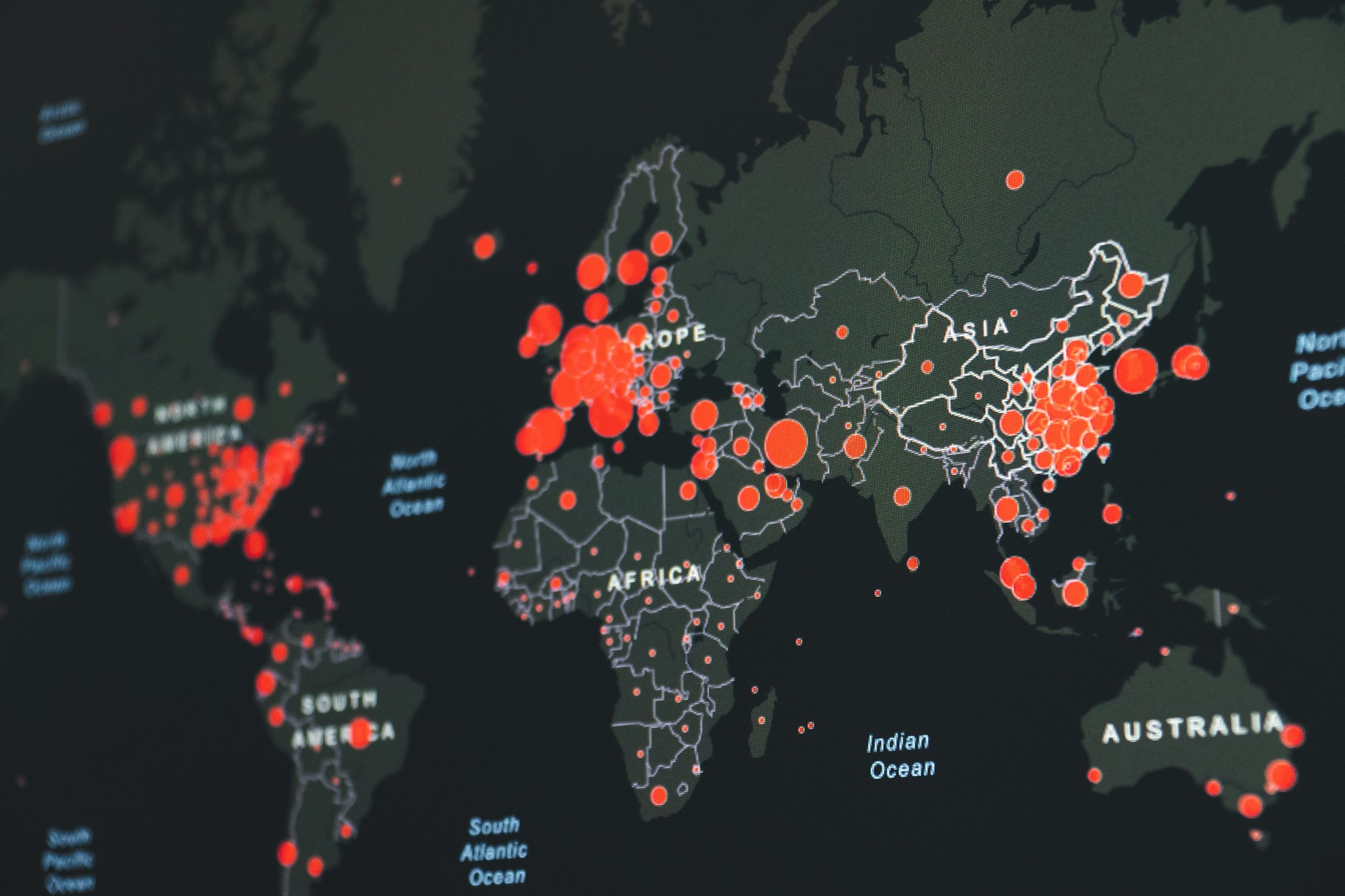No, you do not need to use video in flipped learning (and five alternatives)

If you're a school teacher or college instructor, try this experiment on your colleagues sometime: Go to one of them and ask them for their definition of "the flipped classroom", or as I prefer to call it flipped learning, and see if they mention using videos. Count the number of times this happens among your sample of colleagues. I would be willing to bet that for a sufficiently large sample, the percentage of responses that involve video usage will be somewhere between 75% and 100%.
Flipped learning has become almost indelibly identified with the use of video. And I think this is is a problem, because almost everywhere I go and have conversations with teachers and faculty about flipped learning, I hear some combination of these concerns:
- I like the idea of flipping my classroom, but I just don't have time to make the videos.
- I like the idea of flipping my classroom, but I just don't have the tech skill to make the videos.
- I don't have time or skill to make videos for my class, and I don't feel comfortable using someone else's videos (for a number of reasons).
- I'm not flipping my class because I just don't think it makes sense to use videos in what I teach.
The perceived coupling of flipped learning and video is driving people away from trying flipped learning.
The point I want to make in this post, the good news, is that flipped learning does not require video. In fact, it's possible to have a highly effective flipped learning environment without any video whatsoever, or even much in the way of high technology in the first place.
History lesson
Where did the perception that flipped learning requires the use of video come from? Two main sources come to mind:
- The work of Jon Bergmann and Aaron Sams, whose book Flip Your Classroom: Reach Every Student in Class Every Day (2012) pushed flipped learning firmly into the public consciousness. Bergmann and Sams had used video to great effect in their work as high school chemistry teachers in the mid-2000's, which led to sharing their work through a series of highly successful workshops. They were so good at using video to teach that a whole generation of teachers did what any smart teacher would do: Fork the idea and make it their own. And so flipped learning began to be identified with video use, and the massive popularity of their book cemented it.
- Sal Khan and the rise of Khan Academy. Neither one of these needs any introduction. But back in 2011, as Khan Academy's star was really rising, Sal Khan gave this TED talk that has, so far, received over 4.3 million views in which he specifically talks about using video to create a "flipped classroom". Through that talk, in the minds of the millions of viewers of this video, and the millions more who have heard its message, flipped learning and video became inextricably linked.
The thing is, Bergmann and Sams have never said (to the best of my knowledge) that flipped learning must use video. In fact I know Jon Bergmann pretty well: he wrote the Foreword for my book, and we've communicated extensively about flipped learning and our shared work in the Flipped Learning Global Initiative. I am nearly 100% certain that if you asked him if you could flip a class without using videos, not only would he say "Of course" but could give you dozens of examples of where it's been done, and done well. And as for Sal Khan, even though he has made his mark on the world through making videos, I have never heard him say that to flip a class one must use a video.
So the idea that flipped learning requires video seems to be more perception than fact. And in fact, going back further in the history of the flipped learning concept reveals that most of the initial, intentional uses of flipped learning go back to the mid-90's and early 00's, predating the existence of video hosting services like YouTube by as much as a decade. Video can't be a requirement for flipped learning if flipped learning was invented before the ability to host the video. (For more on the history side of things, you should buy my book, which has a whole chapter on this.)
What is flipped learning anyway?
I don't mean to keep pushing my book[1] but in it, I go to great lengths to arrive at the following definition of flipped learning:
Flipped Learning is a pedagogical approach in which first contact with new concepts moves from the group learning space to the individual learning space in the form of structured activity, and the resulting group space is transformed into a dynamic, interactive learning environment where the educator guides students as they apply concepts and engage creatively in the subject matter.[2]
This means that before the class does anything together, students do something first, namely cover the basic ground of the new concepts needed for effective group work later. What the students do, and how they do it, is not specified --- which is as it should be. So what happens "before class"[3], happens because you, the instructor, have worked backwards and figured out what the hardest concept of the lesson is, designed an active learning task to address it during class, and in order to be ready to "launch" that task, students need to do some initial legwork.
Does that legwork have to be watching a video? No.
What are the alternatives?
Here are five alternatives to using video (or, things you can have students do in addition to video) that can accomplish the goals of pre-class activity in a flipped learning environment as we just described, in roughly increasing order of technological involvement.
- Text + structured activity. There is nothing wrong with good old fashioned text resources, whether dead-tree or online. In fact, I know a lot of students who prefer text to video for many reasons. Even for me personally, when I'm learning something new, I hate watching a video for it --- I'd much prefer well-written instructions. Online text in particular is often lightweight, easily searchable, easily saveable in different formats, inexpensive, and you don't need a service to host it. The main thing about this option is that in order to be really flipping the learning, it has to be accompanied by a structured activity for students to use to engage with it. Let me say that again: Just giving students a text, and saying "read chapter 3 and come ready to discuss", and then discussing it in class, is not flipped learning because the key to flipping learning and not just flipping a classroom, is that all students are getting instruction even in the pre-class phase. Handing students a book is not the same as instructing them. So no, the humanities have not been doing flipped learning since the Middle Ages. Not all humanists anyway[4].
- Audio + structured activity. An alternative to video is audio, whether music or podcasts or voice-recorded lectures. Audio has its advantages: The files are usually smaller, so it's easier to host and students with limited bandwidth (e.g. no wifi) aren't at as much of a disadvantage. For some disciplines --- music, languages, etc. --- audio might make the most sense of all possible media. You could use a service like VoiceThread to put text or images together with audio. There's something about the sound of a human voice that seems to play an important role in learning.
- Text + social annotation + structured activity. One of the earliest instances of flipped learning --- Eric Mazur's invention of peer instruction at Harvard in the mid-90s --- had students preparing for class by reading the textbook. Not just reading the textbook, but reading an online version of it that had been equipped with special in-house software that let students mark it up, leave notes, and engage in discussion with each other, all visible to all the students. That in-house software was recently released to the general public under the name Perusall. Another popular social annotation software is hypothes.is, which adds a social commentary and markup layer to any object on the web, text or otherwise. My colleague Matt Roberts has used hypothes.is very successfully in flipping his political science classes, for example by having students read and discuss Supreme Court rulings online before coming to class.
- Games + structured activity. Sometimes the most effective way to get students involved with a new concept is to make a game out of it. In my Discrete Structures for Computer Science 2 class, one of the most successful Guided Practice assignments I give is for a lesson on planar graphs, which is a simple concept (When can you take a network and disentangle it so that none of the connections physically cross each other?) but leads to some deep theory quickly. I discovered that planarity had been made into a game that runs in a web browser. My pre-class activity for the students was to explain what a planar graph looks like and then: Go and play this game until you beat Level 4. Take notes each time on the number of nodes, edges, and faces of the resulting planar graph. Students loved the game and it got them interested in the main question of the lesson --- and provided us with enough data to let the students discover Euler's Formula on their own.
- Simulations + structured activity. Finally, sometimes the best approach for pre-class experiences can be giving students experiences playing with the thing they are about to study in depth. A Stanford study from 1999[5] (before flipped classrooms hit the mainstream), for example, exposed two groups of students to different ways of learning about the human auditory system: One group received direct instruction, and the other used a "tangible interface" --- a physical simulation --- for the auditory system first, in a guided exploration first before debriefing in class. The second group significantly outperformed the first on subsequent assessments. We hardly need data, though, to tell us that playing around with interactive models can often pique our interest in something, making us more ready to dive deeper later.
Conclusion
You do not have to use video if you are using flipped learning. The two concepts are independent of each other: Many flipped learning environments do not use video, and nearly all of the earliest forms of flipped learning not only did not use video, the use of video was not even technologically possible at the time. Conversely, many people who think they are flipping a classroom because they put all their lectures on video --- only to lecture more in class, or just give rote worksheets, etc. --- are laboring under a misconception.
We need to decouple flipped learning from the concept of recorded video. Sometimes video makes sense, and sometimes not. What does always make sense is improving student learning, and flipped learning environments can be drawn up in many forms to help make this happen.
OK, actually I do, a little. ↩︎
The starting point for this definition comes from the definition at FlippedLearning.org, which has some great additional material to go with it. ↩︎
This is in quotes because not all courses have a "before class", e.g. asynchronous online courses. To learn how to flip those... read my book!
#selfpromotion↩︎Someone is going to get upset and claim that I am a STEM person picking on humanists. I am indeed a STEM person but this is not picking on humanists. What I am picking on, is the idea that reading before class + discussion in class = flipped learning. That equation is false. To understand why, well, read my book where I discuss specifically the criticism that flipped learning is just an edu-speak rebranding of something that's been going on since 1088. For the record, I think humanists are awesome and I graduated with a minor in English, so there. ↩︎
Schneider, B., & Bumbacher, E. (1999). Discovery Versus Direct Instruction: Learning Outcomes of Two Pedagogical Models Using Tangible Interfaces. In "Exploring the material conditions of learning: opportunities and challenges for CSCL,” the Proceedings of the Computer Supported Collaborative Learning (CSCL) Conference (pp. 364–371). ↩︎


